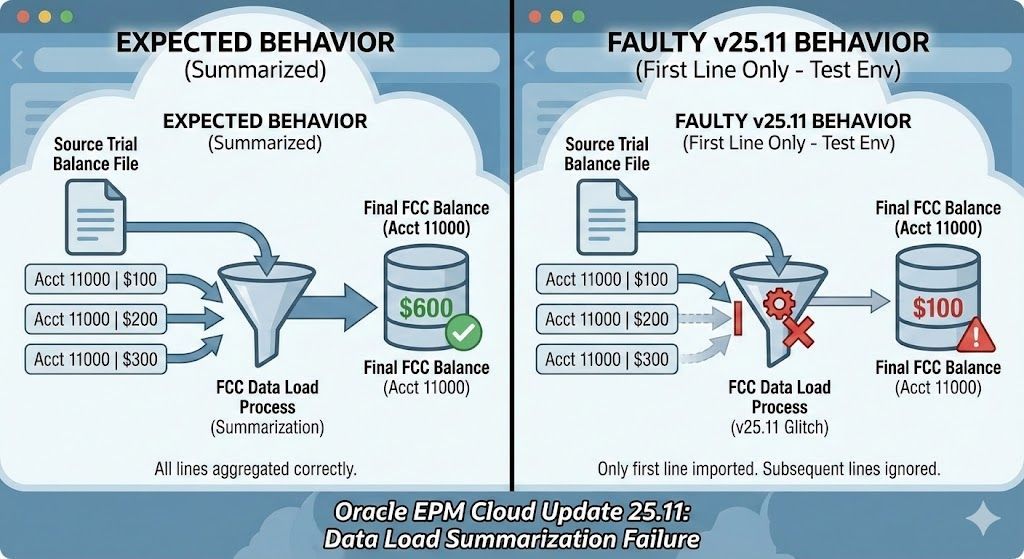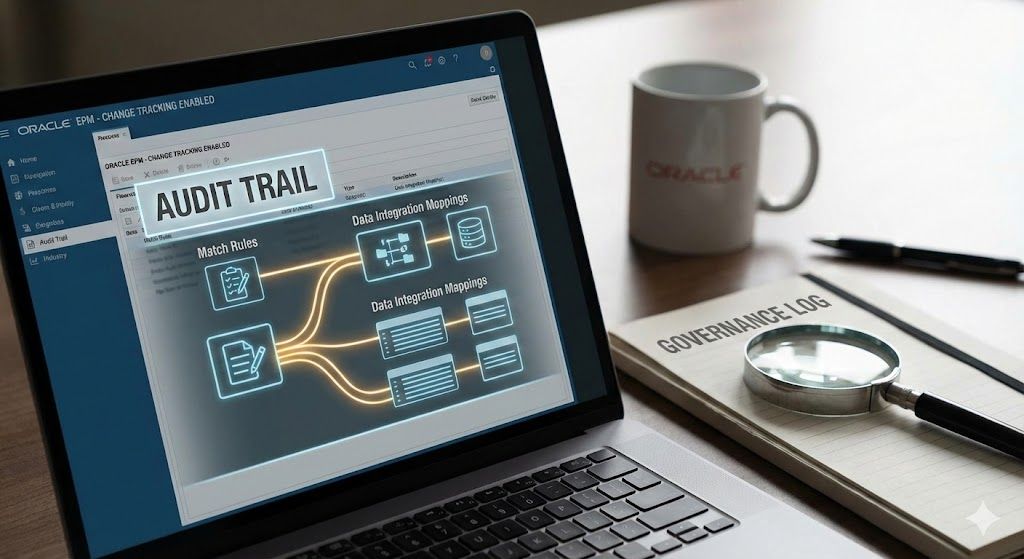Oracle Tax Reporting: Mastering the Return to Accrual Process
Nadia Lodroman | Oracle EPM Consultant | Integrity in Every Insight.
8 April 2025
Listen to Tresora and Ledgeron's chatting about this blog post:
Boosting Efficiency and Accuracy in Your End-to-End Tax Provision
In the intricate world of corporate tax, the Return to Accrual (RTA)
process stands as a critical bridge between financial reporting and tax compliance. It’s the crucial step where temporary differences between book and tax accounting are analysed, leading to the calculation of deferred tax assets and liabilities.
Traditionally, this process can be time-consuming, error-prone, and heavily reliant on manual spreadsheets. However, with Oracle Tax Reporting (TRC), organisations can transform their RTA process, unlocking unprecedented levels of accuracy and efficiency.
This article delves into how Oracle Tax Reporting empowers tax professionals to navigate the complexities of the RTA, leveraging its robust features to automate tasks, ensure data integrity, and ultimately streamline this vital step in the tax provision lifecycle.
The Challenges of a Manual RTA Process:
Before exploring TRC capabilities, it's important to acknowledge the pain points often associated with manual RTA processes:
- Data Silos: Information needed for the RTA often resides in disparate systems (GL, sub-ledgers, tax workpapers), requiring significant effort to gather and consolidate.
- Spreadsheet Dependency: Reliance on spreadsheets introduces the risk of formula errors, version control issues, and limited audit trails.
- Time-Consuming Analysis: Manually identifying and analyzing temporary differences can be a laborious and resource-intensive task.
- Reconciliation Headaches: Reconciling the RTA to the trial balance and other supporting documentation can be a significant challenge.
- Lack of Transparency and Control: Manual processes often lack the visibility and control needed for effective review and governance.
Oracle Tax Reporting: A Catalyst for RTA Transformation:
Oracle Tax Reporting offers a centralised and integrated platform designed to overcome these challenges and elevate the RTA process. Here's how:
1. Automation at its Core:
TRC's automation features significantly reduce manual intervention in the RTA process:
- Automated Data Integration: Seamlessly connect to various source systems (GL, ERP, sub-ledgers) to automatically pull relevant financial data, eliminating the need for manual data gathering and entry.
- Pre-built Calculations and Logic: Configure rules and calculations within TRC to automatically identify and categorize temporary differences based on predefined criteria. This reduces the risk of human error and ensures consistency.
- Workflow Automation: Define and automate the RTA workflow, including review and approval processes, ensuring timely completion and clear accountability.
- Automated Journal Entry Creation: Once the RTA analysis is complete, TRC can automatically generate the necessary journal entries for posting to the general ledger.
2. Robust Data Reconciliation Capabilities:
Accuracy in the RTA process hinges on robust data reconciliation. TRC provides powerful tools to ensure data integrity:
- Trial Balance Integration and Reconciliation: Easily import and reconcile trial balance data against the RTA analysis, highlighting any discrepancies for investigation.
- Variance Analysis: Configure thresholds and generate variance reports to quickly identify significant changes in temporary differences, facilitating focused review.
- Drill-Down Functionality: Investigate the underlying details of account balances and temporary differences with intuitive drill-down capabilities, tracing data back to its source.
- Audit Trails: Maintain a comprehensive audit trail of all changes made within the system, providing transparency and supporting compliance requirements.
3. Ensuring Accuracy and Streamlining Efficiency:
By leveraging automation and robust reconciliation features, TRC directly contributes to both accuracy and efficiency in the RTA process:
- Reduced Errors: Automation minimizes the risk of manual data entry errors and calculation mistakes, leading to more accurate deferred tax balances.
- Faster Turnaround Times: Automating repetitive tasks and streamlining workflows significantly reduces the time required to complete the RTA.
- Enhanced Collaboration: A centralized platform facilitates better communication and collaboration among tax team members.
- Improved Visibility and Control: Real-time dashboards and reporting provide greater visibility into the RTA process, enabling better monitoring and control.
- Focus on Strategic Analysis: By freeing up time spent on manual tasks, tax professionals can focus on more strategic analysis and value-added activities.
Key Features in Oracle Tax Reporting for Mastering the RTA
- Tax Provision Matrix: A central hub for managing all aspects of the tax provision, including the RTA.
- Deferred Tax Automation: Specific modules and functionalities dedicated to automating the identification and calculation of deferred taxes.
- Data Source Integration: Flexible options for connecting to various GL and sub-ledger systems.
- Reporting and Analytics: Comprehensive reporting capabilities to analyze RTA data, track trends, and provide insights.
- Security and Controls: Robust security features to ensure data integrity and compliance with internal controls.
Conclusion:
The Return to Accrual process is a cornerstone of accurate financial reporting and tax compliance. Oracle Tax Reporting offers a powerful solution to transform this traditionally complex and time-consuming task. By embracing automation, leveraging robust data reconciliation capabilities, and providing a centralised platform, TRC empowers tax professionals to achieve unprecedented levels of accuracy and efficiency in their RTA process. This not only reduces risk and improves compliance but also frees up valuable time for strategic analysis and ultimately strengthens the overall tax function. If your organization is seeking to optimise its tax provision process, exploring the capabilities of Oracle Tax Reporting for mastering the Return to Accrual is a crucial step towards achieving tax excellence.
Turning financial complexity into operational clarity. Because in Finance, Integrity is Permanent.






